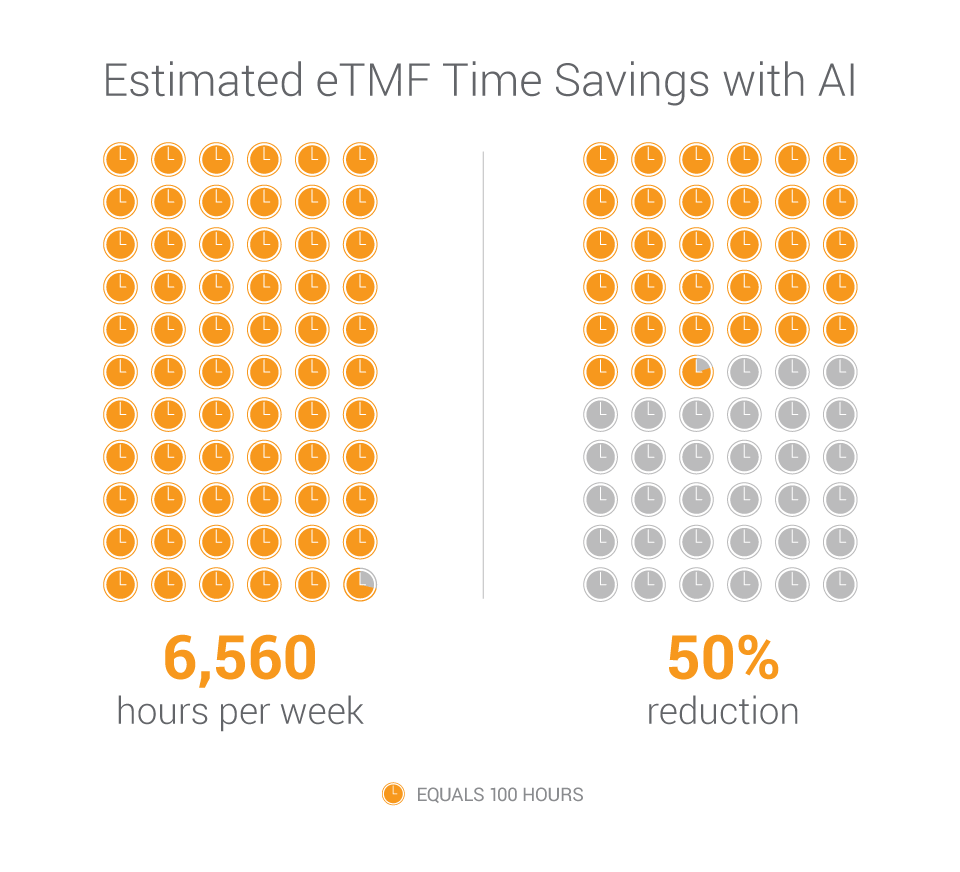Blog
Driving Efficiencies in eTMF with AI
Aug 09, 2021 | Kyle Stephenson
Aug 09, 2021 | Kyle Stephenson
The adoption of purpose-built eTMF applications has quadrupled since 2014. The move from paper to digital has fueled positive change in the industry, enabling organizations to manage their trial master files (TMF) more actively and optimize their processes. The gains don’t have to end there, though.
The latest innovations in eTMF technology, including artificial intelligence (AI) tools, are advancing how the industry works and enabling strategic process improvements.
Across clinical operations, AI is used to match patients to studies more quickly and speed drug development, and it can be similarly applied to eTMF. Here’s what you need to know about AI and how it can transform TMF operations.
Practical Applications of AI in eTMF
AI offers tangible ways to improve day-to-day operations and replace transactional activities, like document classification, with strategic activities that support long-term success. Let’s examine what this looks like in practice.
The average trial amasses tens of thousands of documents that must be appropriately indexed in the TMF to ensure compliance with GCP. For proper indexing, each document requires classification with accurate metadata attached. This single aspect of TMF management can take hundreds of hours if done manually, as well as introduce the risk of human errors that cause accidental unblinding or result in inspection findings.

AI can be used to auto-classify documents and populate metadata, saving time and increasing accuracy and compliance. For example, a global pharmaceutical company estimates that its most active TMF users spend as much as 6,560 hours per week managing documents in the system. With AI, the company speculates they could cut this time in half.
Another leading pharmaceutical company achieved a similar outcome in a test environment. The company creates up to 7,000 documents a day and evaluated a machine learning model built using their documents, classifying a week’s worth of documents with 99.8% accuracy. Automating the process with AI drove significant improvements in TMF accuracy. It also shortened the time spent on manual document processing tasks, delivering a savings of nearly 300 hours per week.
AI automates high-volume administrative tasks, freeing up resources for more strategic activities that improve TMF operations. It helps organizations ensure their TMFs are as complete and accurate as possible, rationalize the voluminous number of documents they possess, and turn that data into actionable insights.
As trials become more digital and global, organizations require more efficient ways to manage their studies. Fortunately, innovations in clinical applications — like AI — are helping the industry increase the efficiency, quality, and speed of trial execution and, ultimately, deliver treatments to patients faster.
Veeva’s Vision for AI-Enabled TMF Management
At Veeva, we’re building AI solutions — including the TMF Bot — directly in our applications to reduce manual processes and increase compliance.
eTMF is an asset for organizations to manage their documents in real-time, ensuring a constant state of inspection readiness, visibility, and oversight. With the addition of AI, eTMF can also serve as a strategic asset throughout a trial’s lifecycle for the most accurate and complete TMF.
To learn more about how your eTMF can drive greater efficiencies, watch this video of TMF Bot in action.